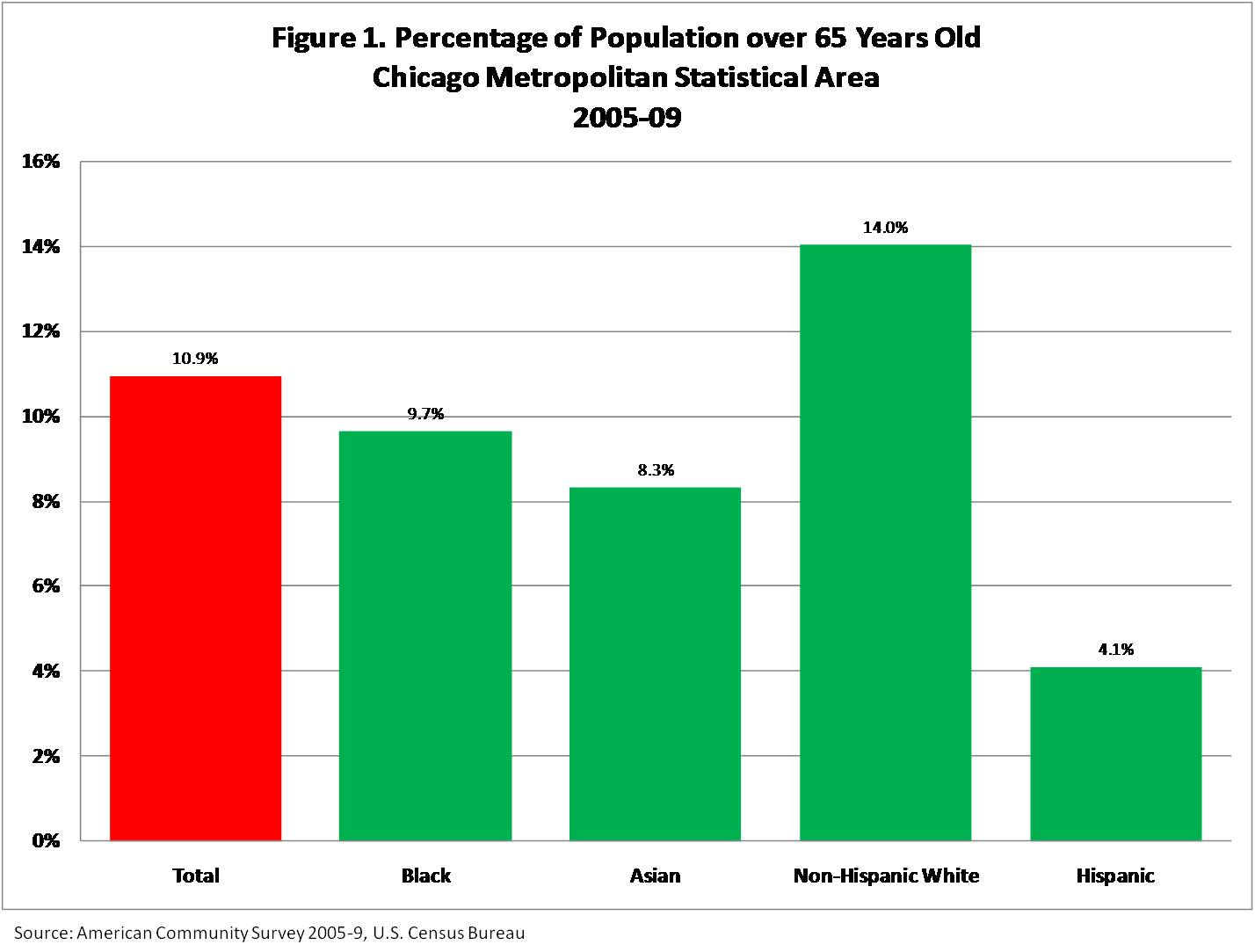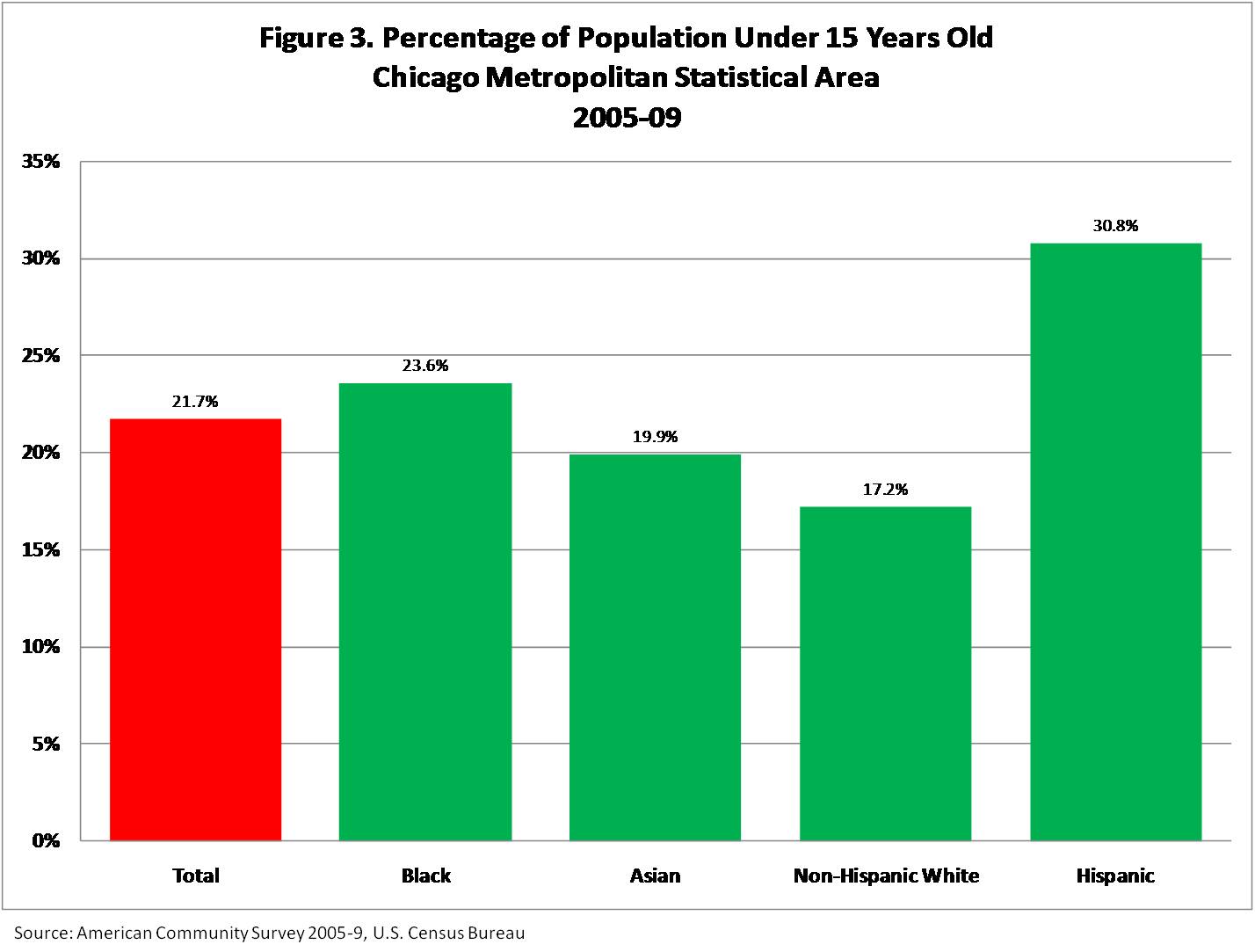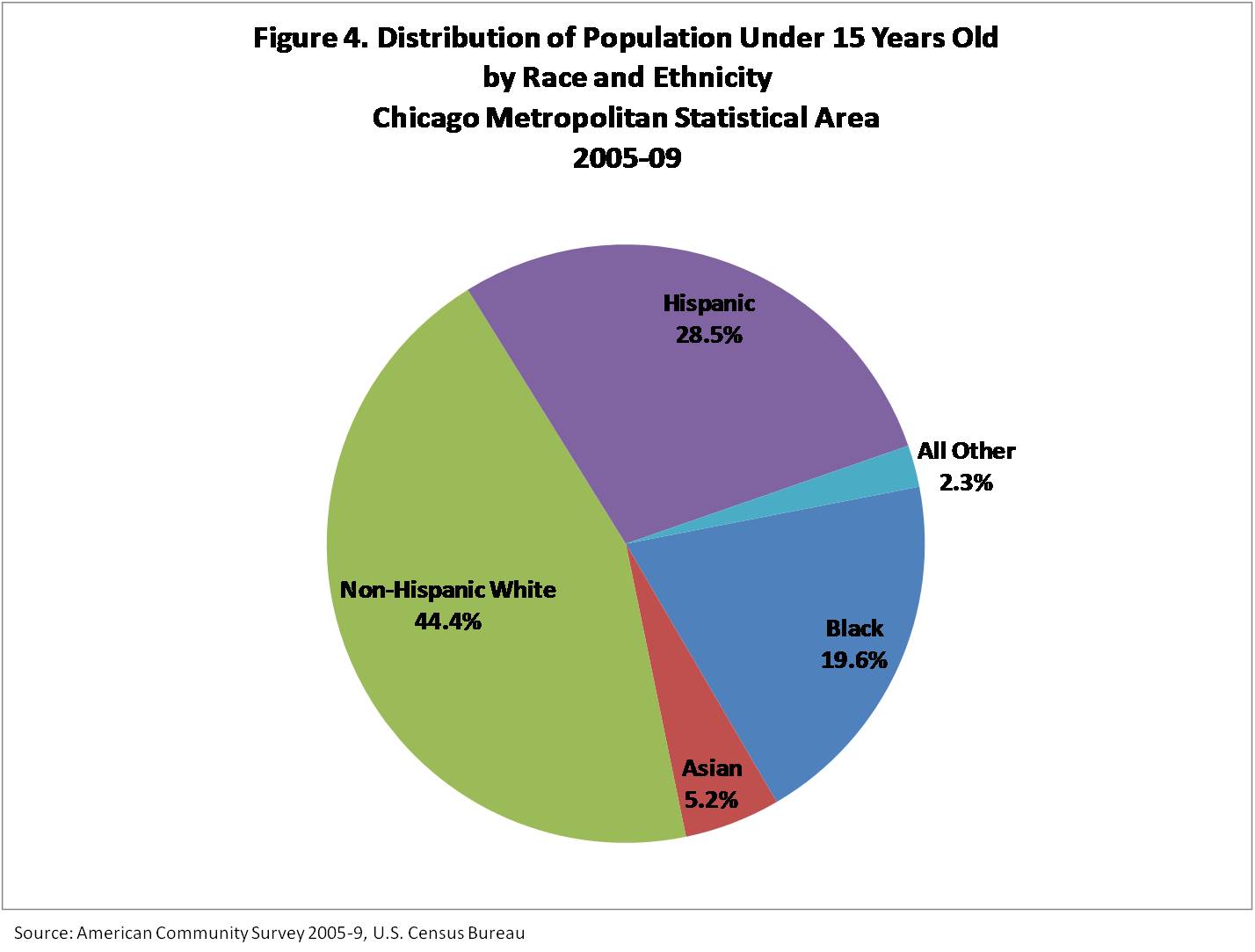By Kiljoong Kim
“More than 2 million Chicago-area baby boomers begin turning 65 this year, unleashing a demographic wave that will last nearly two decades and transform nearly every part of the local economy,” Crain’s reported last week in a special report called “The Graying of Chicago.”
“The number of people 65 or older in the Chicago area will soar 65% to 1.7 million by 2030, estimates William Frey, a demographer at the Brookings Institution in Washington, D.C.
“That’s less than the 78% increase expected nationally, thanks to immigration in Chicago. Still, about 1 in 6 people in the area will be 65 or older in 2030, compared with 1 in 9 today.”
Our own examination has found that the transition has already begun.
*
The Chicago metropolitan area is home to a slightly lower proportion of elderly (10.9%) than that of the nation (12.6%).
The percentages, however, vary significantly by race and ethnicity.
For example, 14% of the non-Hispanic white population in the area is over 65, compared to just 4.1% of Latinos.
 (View enlarged image)
(View enlarged image)
And that’s not just because of young immigrants streaming into the area. A number of studies have found that such variation stems from disparity in access to health-related resources between whites and other racial and ethnic minorities, resulting in shorter life expectancy for the minorities.
But whatever the reasons, this racial gap means the overwhelming percentage of elderly in the area (71.7%) is non-Hispanic white.
 (View enlarged image)
(View enlarged image)
On the opposite end of the age distribution, children younger than 15 are slightly overrepresented in the area population (21.7%) compared to 20.3% for the entire nation.
Again, there is a sizable racial and ethnic difference: 30.8% of Latinos and 19.9% of African Americans in the area are composed of children under 15, whereas only 17.2% of non-Hispanic whites are in the same category.
As a result of these young demographic compositions, 55.6% of children under 15 in the region are racial/ethnic minorities.
 (View enlarged image)
(View enlarged image)
In a metropolitan area where 55.9% of the overall population is non-Hispanic white, Chicago region, as is many other metropolitan areas throughout US, is rapidly becoming a place without a racial or ethnic majority.
 (View enlarged image)
(View enlarged image)
The link between large white elderly population and large youth minority population is quite intimate.
No matter how much modern science and technology extends human lives, the inevitable deterioration in aging process means a massive aging population is no longer an issue confined to those with elderly parents.
The well-being of current elderly population, as well as those that are closing in on that age group, are largely dependent upon the well-being of the emerging labor force that will largely consist of racial and ethnic minorities.
At a micro level, as Crain’s points out, there will be shortage of skilled workers with the massive retirement of Baby Boomers.
But more specifically, the need for doctors, nurses, and other health care technicians and any other high-skilled jobs that cannot simply be outsourced to overseas will steadily increase.
If the shortage of these professionals persists, current and future retirees will have to spend increasing amounts of their fixed-income to receive care they need.
At a macro level, whatever the occupations and professions, the productivity of the next generation workforce is responsible for sustaining a large elderly population that is no longer capable of working whether it’d be paying into social security or taxes that will support various social programs/services and government agencies.
*
Over the years, Social Security has counted on two characteristics: having more workers than retirees and having relatively high wages across the labor market. But if massive number of future workers is dropping out of high school, as is the case among large proportion of African American and Latino students today, sustaining Social Security or any other social programs and services that are dependent upon tax dollars will become challenging.
Grooming a future labor force that is capable of earning a reasonable income rather than minimum wage is crucial not only for the next generation but also to the rest of the population who will have to depend on their productivity and ability to pay taxes.
Most of us do not think about concepts like interdependency across generations, contentious racial dynamics, or efficient labor market in our everyday decisions and future planning.
And current trends in government corruptions, fraudulent and wasteful spendings, and political pettiness keep hindering the ability to forecast what is to come in near future.
However, Chicago is perfectly capable of turning this demographic shift to economic opportunity by tweaking its existing infrastructure. For example, an abundance of vacant land can be used for senior housing of all socioeconomic levels from high-end accommodations with expansive gardens to affordable facilities. City colleges and community colleges can be feeders to needed technical jobs. In return, retirees can be mentors to those children growing up without parents or to anyone who seeks guidance and wisdom.
If the story is about one generation whose glory days are long gone and no longer capable of contributing and another generation that is simply not capable of receiving the torch from those glory days, the future is undoubtedly gloomy. But knowing what is to come ought to give us an opportunity to start a dialogue about how to change the course.
–
Kiljoong Kim is a research consultant and doctoral student in sociology at the University of Illinois at Chicago. He welcomes your comments. Read more in the Who We Are archives.
Posted on February 21, 2011


